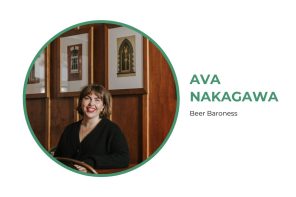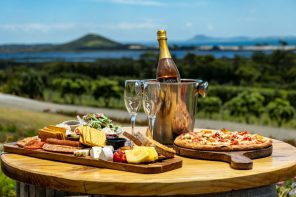Jim Robertson, Pernod Ricard’s global wine ambassador, has spent time around the world learning about wine and teaching and sharing New Zealand wine insights with Pernod Ricard distribution companies, distributors, trade, media and consumers.
New Zealand’s wine industry on the global stage is a relatively young industry and boutique in scale.
“To put it in context, we produce less than 1 percent of the world’s total wine production,” said Robertson. “In April of this year, New Zealand’s total harvest was about 413,000 tons, compare this to Australia, which produced approximately 1.8 million tons, and California, which produced approximately 3.2 million tons and you really see the scale difference.”
As a nation, we are perhaps most noted globally for Marlborough’s Sauvignon Blanc. This is something that Robertson believes will change over time as our Pinot Noir, Chardonnay, Pinot Gris and Syrah become noticed in global markets.
“We’re drinking less better. Consumers also want lighter styles—light and fresh without losing the crisp acidity, intense aromatics and vibrant flavours,” said Robertson. As he explained, the average bottle of Sauvignon Blanc sits around 13 percent alcohol. New Zealand, however, is leading the charge in producing a naturally lighter variant that is about 8 to 9 percent.
Robertson also noted that although currently a small segment, there is a growing movement towards non-alcoholic wines, organic wines, and vegan wines. “I think it’s important to listen to and understand and acknowledge the lifestyle needs of our consumers in the market. It’s an exciting time to be in the wine business.”
With these trends in mind, curating a wine list is no simple task.
“To me, it is easy to produce a wine list loaded with gold medal winners, but it can be a) very food unfriendly, and b) very consumer unfriendly.” Robertson said that one of the best ways to properly construct a wine list is to sit down with both the wine buyer/sommelier and the chef and taste the prospective wines with the food.
“You’re looking to find pairings that match and enhance both the wine and the food. You have to marry the flavours and textures, the aromatics and the weight of the food and wine together.” It is, however, as Robertson explained, about balance.
“It’s about respecting the marriage of the food and the wine. In my view, it’s about putting together a wine list to provide enjoyment and pleasure your diners, as opposed to putting together a wine list of your own preferences.”
Robertson suggested that should the wine lists of the country be analysed, we would likely find that many of them have 20 percent of the wines on the list would account for 80 percent of the sales—in other words, there are a lot of wines on lists that are not pulling their weight.
So how does one go about developing and improving their wine list? “You need to know your customer, number one, and number two, you have to really understand what you want to achieve and be recognised for as a restaurant. What do you want to be recognised for? Understand the flavours and textures that the chef is delivering from the kitchen, and then match wines against those characteristics to enhance the dining occasion.”
Robertson also noted that it was important to develop relationships with the wine suppliers. He encouraged people the utilise third-party sommeliers. “Get a sommelier in, and taste the dishes against four or five wines, until you find a match that really sings.”
Restaurant & Café asked Robertson what makes a truly great wine.
“I’ll put it in the context of Marlborough Sauvignon Blanc. In my view, we have been extraordinarily fortunate that in Marlborough, the region and the Sauvignon Blanc vine/grape fell in love with each other—there’s a bit of magic there. The word terroir is the expression of where the vine finds itself, so if you have the right variety in the right place, some natural magic will happen. As a grape grower or viticulturist, our job is to nurture that bunch of grapes through to the point where the winemaker can capture that magic in a bottle—it’s as much an art as it is a science.”
Curating a wine list is something that requires time and effort. It does, however, provide an enriching experience for the customers. It showcases the food, as well, something that every operator wants. New Zealand is blessed with beautiful wine country, and sourcing local wines is something that customers always respond well too, as well.
“When you’re welcomed into a restaurant, and you’re embraced by its ambience, delivered fantastic service, and a chef who puts a plate on your table that is visually and aromatically attractive with lots of flavour and texture; and you get to share a bottle of wine with the food and company that you’re with—it doesn’t get much better than that,” said Robertson.






